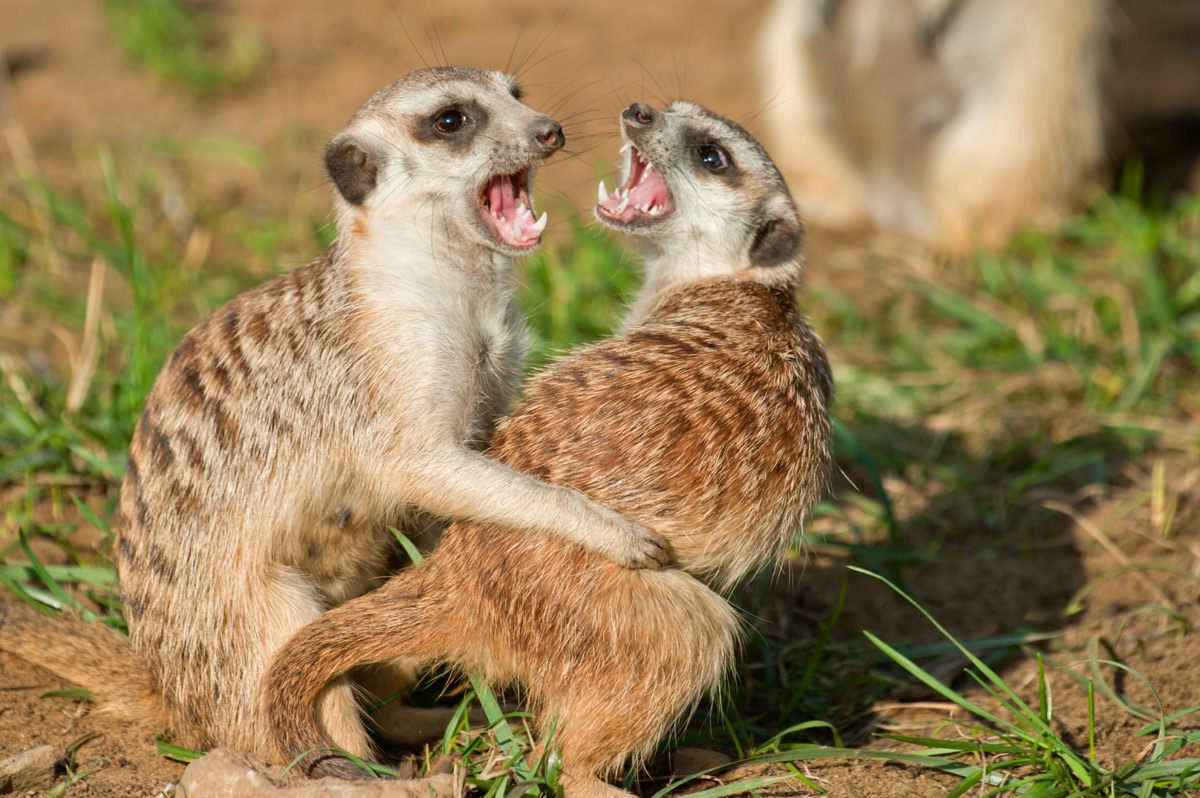Do Animals Murder Each Other?

Watch a wildlife show on television, and you'll likely see at least one scene of an animal killing another, whether it's a brown bear catching salmon in its mouth or a cheetah running down an antelope. But the animal kingdom is rife with more than just interspecies struggles — many species regularly murder, or intentionally kill, their own kind.
Among insects and arachnids, for instance, sexual cannibalism — that is, a female eating a male before, during or after mating — occurs across a number of species, including the Chinese mantis (Tenodera sinensis) and the black widow spider. And shark embryos are known to cannibalize littermateswhile still in the womb.
Of course, animal murder doesn't always involve eating.
Various types of fish, such as cichlids and bettas (Siamese fighting fish), are highly territorial as adults, and they attack, and sometimes kill, other fish placed into their domain.
And throughout the animal kingdom, battles for mates are common and can occasionally end in death. Some hummingbird species have even evolved potentially lethal dagger-tipped bills that males use to stab each otherduring their aerial battles. In some cases, it's not so much murder, but sexual competition, where an animal may accidently kill a potential mate. For example, a group of male Western toads may crowd on a femalein the water, inevitably drowning her.
Related: Can animals commit suicide?
If you really want to see evidence of murder, look no further than social mammals.
Get the world’s most fascinating discoveries delivered straight to your inbox.
In 2016, researchers in Spain analyzed data from more than 4 million deaths across 1,024 mammal species, including humans. [8 Human-Like Behaviors of Primates]
Given that there were nearly 16,000 human murders in the United States alone in 2015, according to FBI data, and a plethora of motivations people have for committing murder — from jealousy, to squabbles about money, to hatred toward those who are different — it'd be easy to think that Homo sapiens sapiens would be the species most likely to kill its own kind.
But humans didn't even rank in the top 30, though other animals commonly thought to kill each other — wolves, lions and nonhuman primates, including various monkeys and lemurs — did.
The research also revealed that a number of seemingly peaceful species are surprisingly murderous. Long-tailed chinchillas, ground squirrels and several ungulate species — including wild horses, gazelle and deer — all ranked in the top 50.
The most murderous mammal species? Meerkats — around 20 percent of meerkats meet their end at the hands (and teeth) of other meerkats.
Overall, less than half of the species studied murder their own kind. And one mammal group stood out as particularly murderous: primates, which are eight times more likely to kill members of their own species than other types of mammals are to kill their own species.
However, the analysis has one major caveat: The circumstances of the murders are quite different between humans and the rest of the mammals.
That is, the majority of mammal murders involve infanticide, or the killing of babies. In meerkat society, for example, dominant females routinely kill the pups of the subordinate females in their group.
Humans are part of a small group of animals, which also includes wolves, lions and spotted hyenas, that routinely murder adults of their species. And among this small group, we stand out. As Harvard biological anthropologist Richard Wrangham told Live Science, when it comes to killing adults, "humans really are exceptional."
Follow Joseph Castroon Twitter. Follow us @livescience, Facebook& Google+. Originally published on Live Science.




